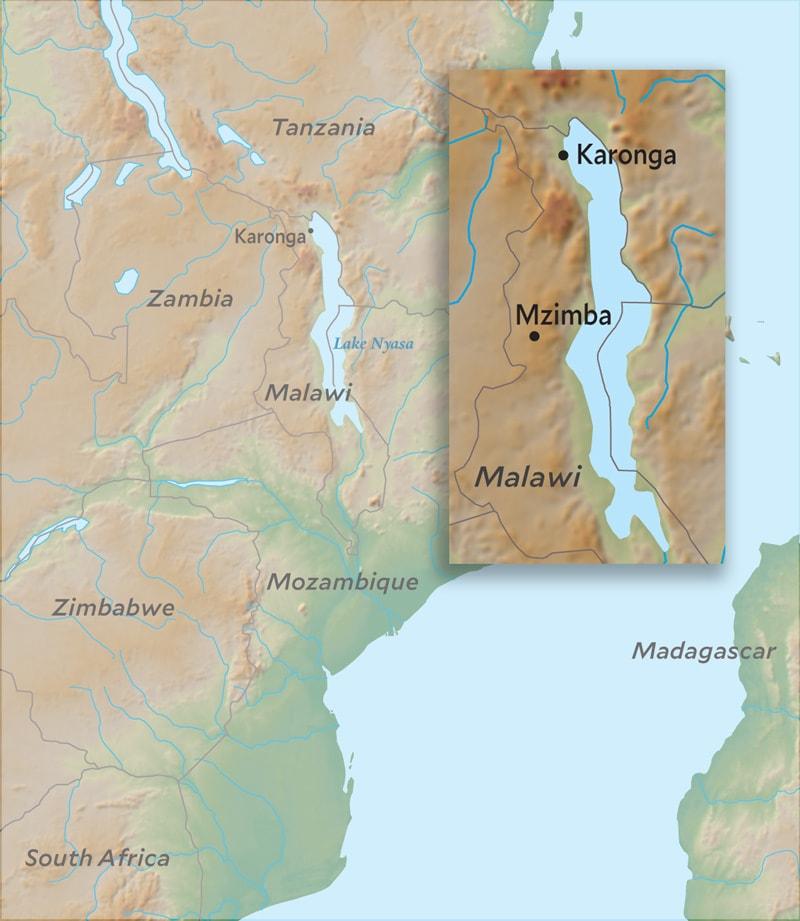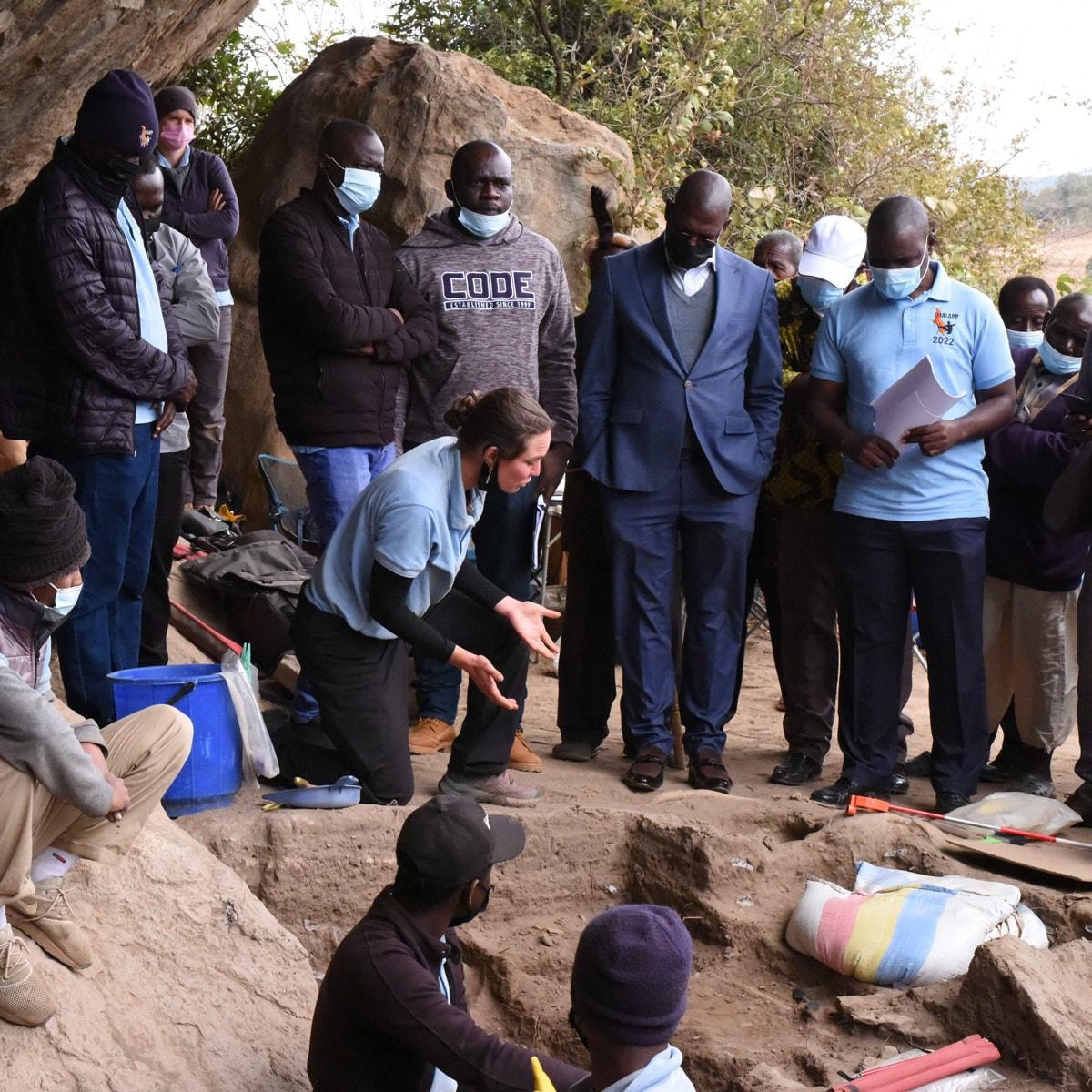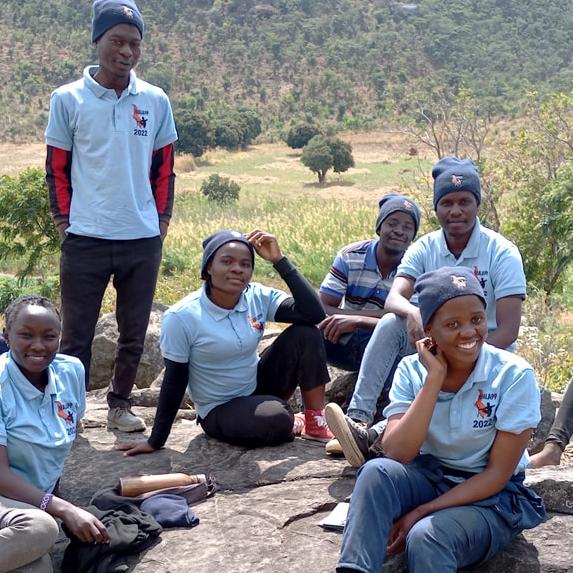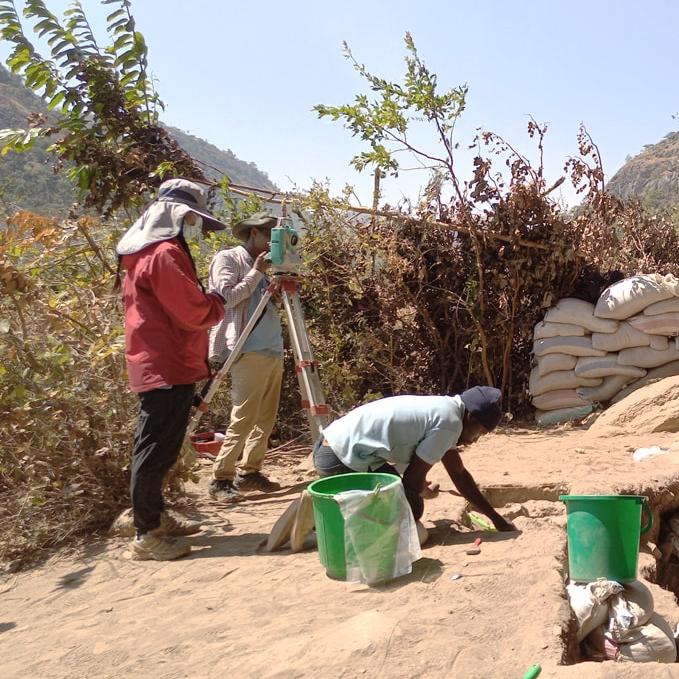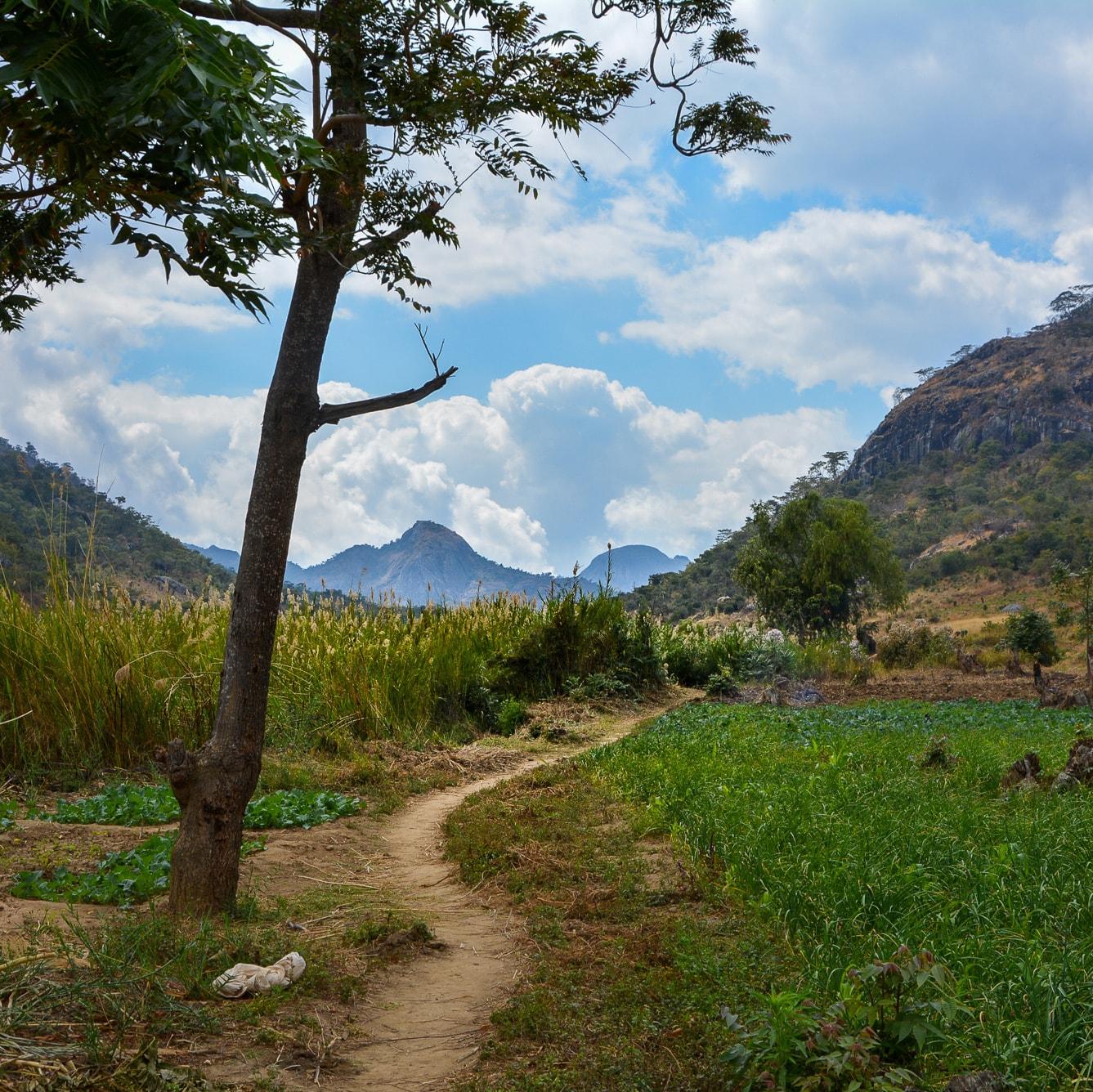In 2005, anthropology graduate student Jessica Thompson hopped into her beat-up truck and started north out of Cape Town, South Africa, on a more than 3,000-mile journey. She was headed toward Stone Age field sites and an archaeological project in Tanzania’s Serengeti National Park. Her trip through rural low woodlands, high-altitude grasslands, and bush rising to wooded mountains took her to the shores of a picturesque lake. This nearly blank area on her archaeological map was in the country of Malawi sandwiched between Tanzania on the north, Zambia on the west, and Mozambique on the south. This north–south stretch of land along the western shores of Lake Malawi is often referred to as “the warm heart of Africa” for the friendliness of its people. And for nearly two decades she’s had the privilege to come back and work with them.
Thompson had been in South Africa studying early humans from the Middle Stone Age (~175,000-65,000 years ago), analyzing animal bone fragments to better understand the ecosystems we lived in at a pivotal transition in our species’ history. “It’s a time we emerged as ourselves, Homo sapiens, with an anatomically human body and uniquely human set of behaviors—the first art, the first long distance exchange of goods, and the beginning of building communities,” Thompson says. There had been extensive research in eastern and southern Africa but relatively little in Malawi. Yet migrating early modern humans, whose descendants would leave Africa and establish the rest of the world’s populations, surely would have passed through this area. Thompson began by looking for that evidence. Fifteen years later, she has discovered so much more.
Watch
Drone footage of Jessica Thompson, researchers, students, government representatives, community members, and volunteers at work at the Mazinga 1 archaeological dig site in Malawi in 2022. Videography: Jacob Davis.
Now an assistant professor of anthropology at Yale and a curator at the Yale Peabody Museum, Thompson’s research focus has been on Malawi since that first trip. Most of her colleagues work farther north in the African Rift Valley, in the modern countries of Ethiopia, Kenya, and Tanzania, or at the southern tip of the continent in South Africa. For Thompson, the “in-between” nature of Malawi is not just about filling research gaps. Malawi sits in the “Zambezian” biome, distinctive for its open-canopy forests and seasonally flooded river plains. These habitats would have presented very different resources to early humans than the iconic grasslands to the north and south. Today, they still support millions of people, as well as unique animal communities, but have received relatively little attention from researchers.
Her 2009 reconnaissance work with a team of 5 was able to confirm reports from the 1960s and 1970s that there were millions of Middle Stone Age artifacts in the red hills at the far north of Malawi, near the modern town of Karonga. No one had determined their age, so the team set to work. Over 6 more field seasons of the Malawi Earlier-Middle Stone Age Project, they placed more than 100 excavations across the landscape, and produced more than 75 individual age estimates. They learned that almost all dated to the end of the Middle Stone Age. In 2021, they combined forces with paleoecologists to discover a striking pattern: early humans toward the end of the Middle Stone Age used fire in sophisticated ways to clear vegetation and promote growth of certain resources. It is by far the oldest known instance of this behavior by modern humans.
Thompson’s work in Karonga also confirmed that stone artifacts were all this grudging landscape was willing to yield. Paleontologists have spectacular opportunities to discover pre-human ancestors, dinosaurs, and even older fossils in the nearby hills, but by the time of the Middle Stone Age, the shores of Lake Malawi were coated with thick layers of red sand that rusted away any signs of fossils. Ancient people may even have been responsible for this, by clearing vegetation and changing erosion patterns. By 2016, Thompson longed to return to her first love: animal bones. She set her sights on a series of shallow caves about 4 hours south of Karonga, near the town of Mzimba.
From her work in the far north, Thompson had learned something crucial: people in Malawi were eager to participate in paleoanthropological research. True to the “warm heart” moniker, they had welcomed the project, but many were also hopeful that this international collaboration could open new opportunities for long-term learning. Together with international collaborators, members of the Malawi government, representatives from a small community museum in Karonga, and the most eager members of the original field team, Thompson established the Malawi Ancient Lifeways and Peoples Project. Bit by bit, she worked to show that these unassuming shelters contained evidence of human behavior, rich records of past life. In 2019, she and her team uncovered bones with some of the oldest human DNA ever found in Africa. It was dated to 16,000 years ago, but the sites themselves so far go back beyond 30,000 years.
This past summer, the team of 70 that Thompson assembled spent the 2022 field season carefully excavating and processing what they found by weighing, measuring, and recording objects from deeper—and presumably older—layers. Engaging and hiring members of the local community has been key to the project’s success.
Because many foreigners come into rural parts of Malawi for commercial extraction, community liaison is crucial for transparency. Thompson works closely with local authorities and members of her team have become ambassadors to their fellow community members. This work is necessary for ensuring the project does not just extract a different type of resource—knowledge—without giving something back in equal measure.
The people living near Mzimba are fiercely proud of their cultural heritage. There are now renewed discussions amongst community leaders about building a heritage center there that incorporates archaeological findings. Thompson is also working with local creatives to develop short documentaries in regional languages, while also aiding in the search for funding to support a community-generated initiative entitled “Heritage in Young Hands.” Raising awareness of the fragile and threatened nature of archaeological sites also contributes to their preservation. The team identified rare and ancient rock sites with the help of local guides who were excited to learn about their significance. The project’s long-term sustainability, and conservation of tangible heritage for future generations, depends on the support of those living closest to it.
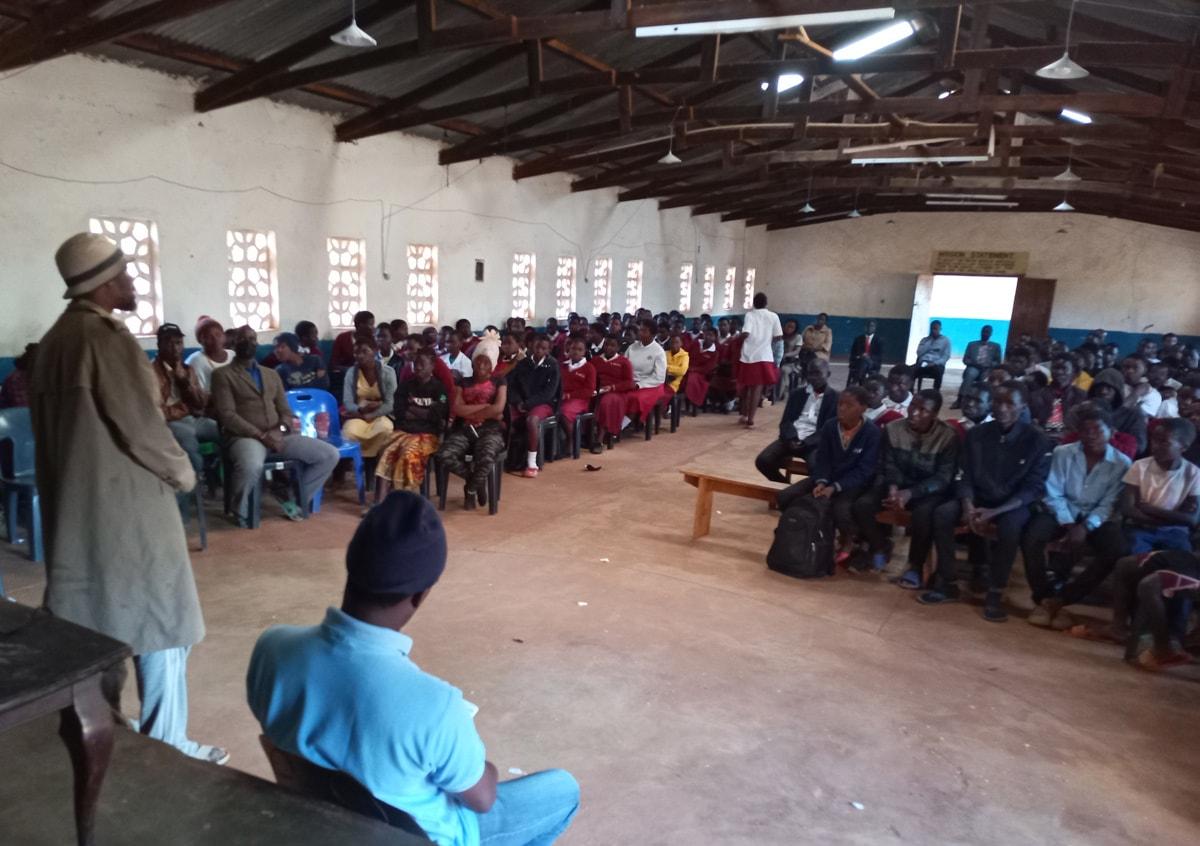
The lack of infrastructure in Malawi has been a consistent challenge. Malawi is the only country in Africa with no national museum that can act as a nexus for research, education, and conservation. Artifacts and fossils recovered during the project either remain in Malawi or are temporarily brought to Yale for analyses that are not possible there. “The ideal goal is to get to a point where almost nothing needs to be exported for analysis—where the work is done in Malawi, by people from Malawi,” Thompson says. “My role in this is to help build capacity through training and petitioning the international community for aid in developing long-term infrastructure.”
All archaeological and paleontological finds in Malawi are kept in the National Repository near Blantyre, in the far south of the country, where artifacts are mostly stored in cardboard boxes. The building has a leaky roof and insect problems. Thompson has devoted research resources from Yale to the construction of wooden cabinets for storage, donated materials like scales and hand lenses for study, and supported personnel in creating a basic inventory. But these are temporary solutions.
“We are hopeful that the Malawian government will fund building a national museum as an urgent issue,” Thompson says. “But even if that happens, it will only be the beginning of the job. There will still need to be staff training, exhibit and collections infrastructure, and a sustainable plan for outreach into communities across the country so that they can also benefit.” Thompson hopes her experience as a curator during the Peabody's transformative renovation can be a resource when that time comes.
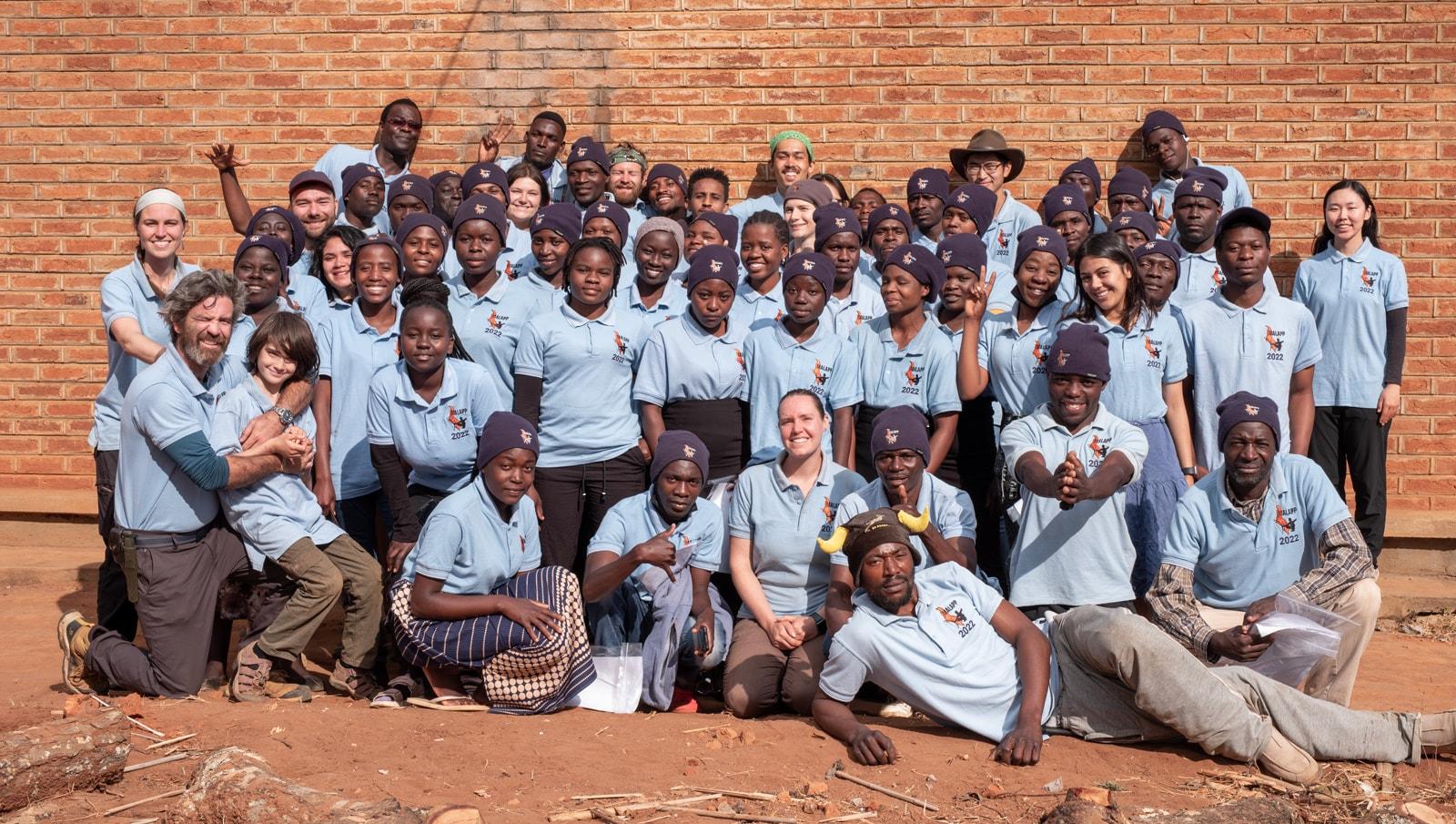
Thompson is passionate about keeping the Malawi Ancient Peoples and Lifeways Project going and discovering more about the life of early humans in Malawi. “There’s a push in academia to publish papers about what has been discovered so far, but I am dedicated to continuing this project and at the same time helping to show the world what an incredibly rich place Malawi is in terms of cultural and natural heritage,” she says. More about Thompson’s outreach efforts can be found here.
To encourage the project’s influence and the growth of this research area in Africa, Thompson worked with colleagues to recruit student researchers from within Malawi and across the continent. The 2022 field season was a special one. In addition to Malawi government collaborators, it involved 8 students from Malawian universities, as well as 6 students from Ethiopia, Nigeria, Kenya, and South Africa. The research team also included individuals from China, France, Germany, the Netherlands, Australia, and the USA—including Yale. And more than 40 were from the local community.
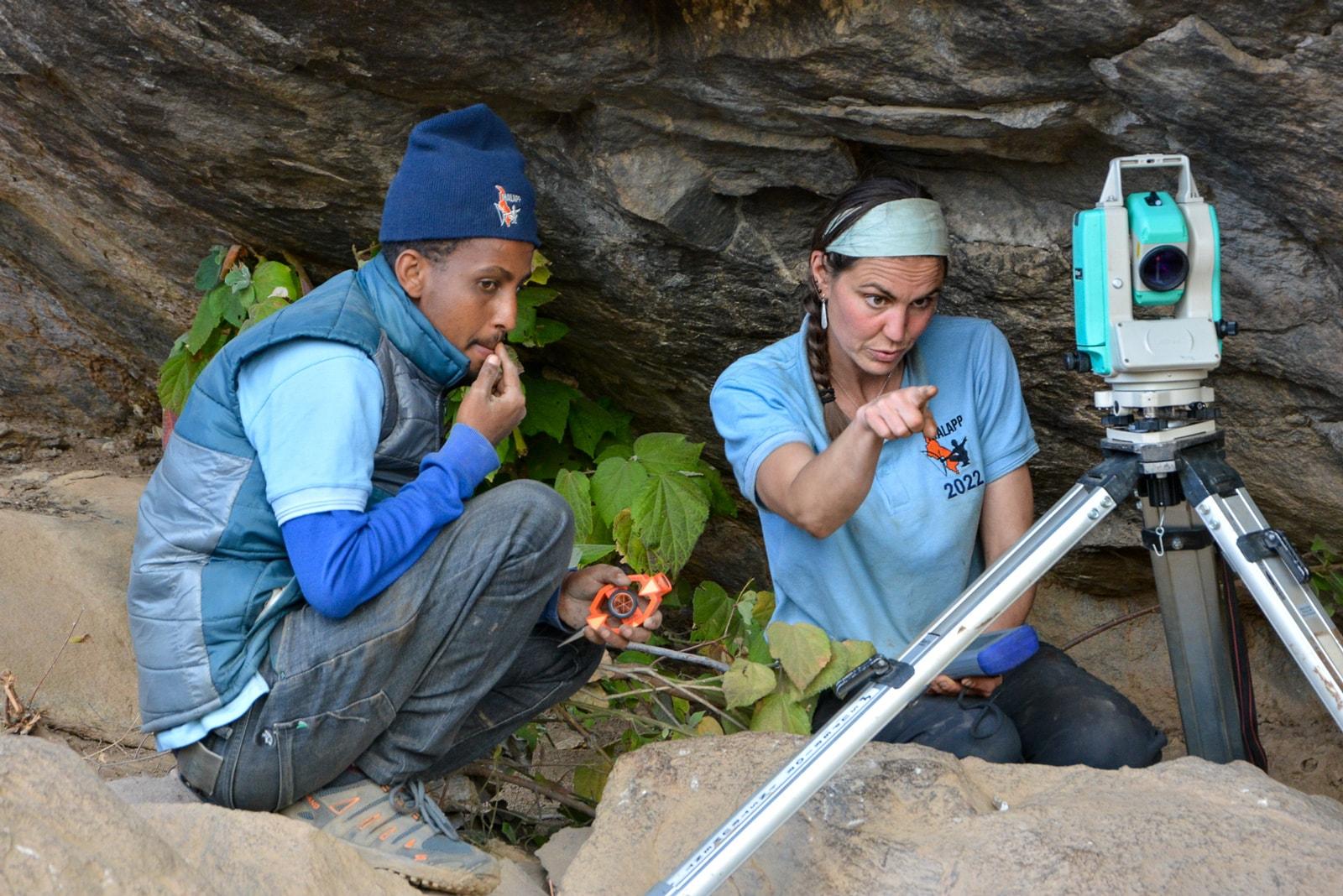
Excavation in Progress
Excavation of the Mazinga 1 field site. Focus moves from Ian Nkosi (Mzimba community) to Hannah Keller (PhD student at Yale University), cuts to Davie Mwandira (Mzimba community) with University of Malawi students in background, then to Bacara Spruit (PhD student at University of the Witwatersrand, South Africa), then to Babaloa Jacobs (recent graduate from University of Ibadan, Nigeria). Videography: Jessica Thompson
Collaborative research takes a village of specialists. Making that village visible and giving back to the public a piece of what has been discovered are some of the most rewarding parts of Thompson’s work: “The most important form of support is the public’s curiosity and the simple human drive to know more about the ancient past.”
. . .
Funding for the 2022 field season, including support for Malawi student participation, was provided by the Leakey Foundation and Yale University. Funding for international student participation was provided by Hyde Family Foundations through a grant to the Human Origins Migrations and Evolution Research consortium, the Yale Institute for Biospheric Studies, and the Coe-Hazard fund from the Yale Council on Archaeological Studies.
